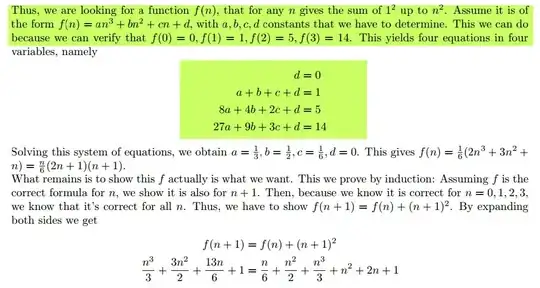I was solving Project Euler's problem # 6, where one has to find the sum of square of numbers from 1 to 100. I solved it using code and downloaded the Overview provided, to learn from it but I can't understand how the author has formed the function for finding the sum of square of numbers from 1 to n.
I've attached an image, highlighting the part of the document I don't understand. I know this is something really straightforward but I don't get it.
Please help and thanks in advance.
